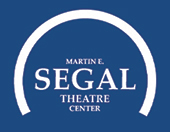America-in-Play, a collective of theatre scholars and artists, presented their riff on nineteenth century Medicine Shows, entitled “Crossing Over” at the MESTC on April 19th. The title was apt in many senses of the word, as the group’s playwrights and actors blended old and new, comedy and pathos in a format that was full of music and drama. Medicine Shows, as Jenn Worth mentions in her previous post , was a major form of popular entertainment during the nineteenth century, especially for rural audiences. They are perhaps more familiar to us in the corners of frames of Westerns, where the Snake Oil salesman promises to cure the likes of ulcers, weak eyesight, hearing loss, hair loss, rheumatism, you name it with his brand new elixir. In reality, they were more akin to a type of variety theatre circuit where salesmanship was only one part of the entertainment (and by the looks of it, boy, was it entertaining!). By centering our focus on the skits and personalities of Medicine Shows, AIP fleshes out how important—and fun—these shows were to the audiences.
The story of “Crossing Over” is loosely framed by a Medicine Show styled entertainment and story about an Irish immigrant’s travels around the country. Along the way, he encounters a cross-section of American society. With individual playwrights given different sections to write, the style is necessarily loose. Based on nineteenth century life and entertainment, we get a picture of the American city of the period that is a mix of the picturesque, sentimental, and, occasionally, tragic. AIP’s project asks key questions about the relationship between a performance form and its historical context. Can the genre alone inform our understanding of a historical period? Of ours? Especially in the wake of the Arizona immigrant law, how can it inform our own debates? One gets a sense of the Medicine Show and of the late nineteenth/early twentieth century immigrant experience, but one wonders how they fit together. AIP’s presentation was a pared-down version of a larger work that should answer these questions. With songs.








Illuminating the Science, Part 2
Last week I expressed some skepticism that art and climate science were complementary languages. I also expressed some hope that the nature of these two fields – that is, that they both are ways of better knowing the world – really were reconcilable, and could create a better robustness of understanding the natural world.
My optimism wasn’t misplaced. After attending both sessions on Thursday, my expectations were perhaps even expanded. There were a number of presentations – on windowfarms, on tree museums, on plankton, a play – and each emphasized new ideas of interaction, relationships, and communication.
If there was a takeaway on Thursday it was the idea of collaboration – not just between scientists and artists, but that art forms that did interact with climate data could themselves be collaborative with larger groups of participants. Brita Riley’s ideas on R&D-I-Y (Research-and-Develop-it-Yourself) crowdsourcing through her windowfarms project was an outstanding example of this collaborative approach. For R&D-I-Y is not only a project that interacts with and proliferates climate science awareness, it establishes a democratic model wherein the solutions to climate change percolate up from the community.
The windowfarms project is informed by, but does not rely solely on expert knowledge to build a climate change solution. It is improved through a network of people who experiment with new ideas, share knowledge, establish interpersonal relationships, and ultimately do. In this the project seems somewhat analogous to the process of creating science, but there is a difference: the collaborative model here is a solution that is more accessible to the non-scientific community. As such, the windowfarms project can fill some of the gaps between creating scientific knowledge and disseminating that knowledge; it works from both the top-down and from the bottom-up.
This collaborative and accessible approach was repeated throughout both sessions. Scientists expressed frustrations that their research often seemed inaccessible, while the artists emphasized interactive models for the dissemination of that otherwise-inaccessible scientific knowledge. Whether it was through Katie Holten’s tree museum, Superhero Clubhouse‘s theatre projects whose format and dialogue were improved upon through audience participation and response, or Cynthia Hopkins‘ collectively-written song on climate change, each presentation posited new forms for the communication of climate scientists’ knowledge.
As part of a larger gesture towards more collaborative communication and an emphasize on accessibility, Thursday’s event surely offered ambitious proposals towards the better proliferation of climate-change awareness. As I had hoped, it offered a new way of thinking on climate change – a new robustness.
–TRISTAN JONES / APRIL 27 2010